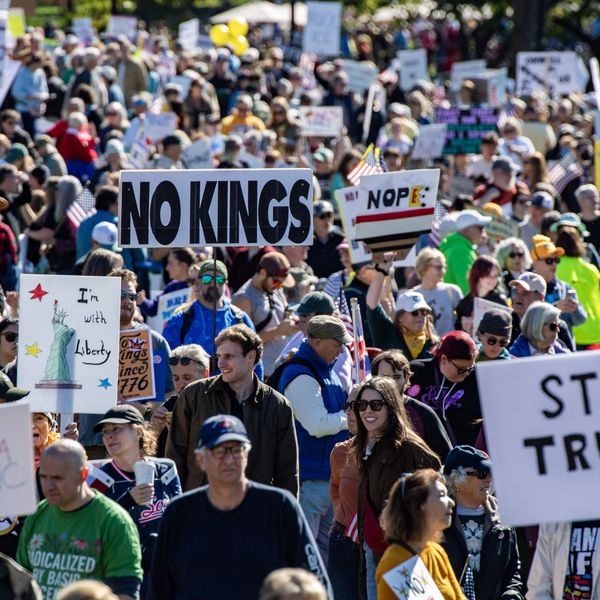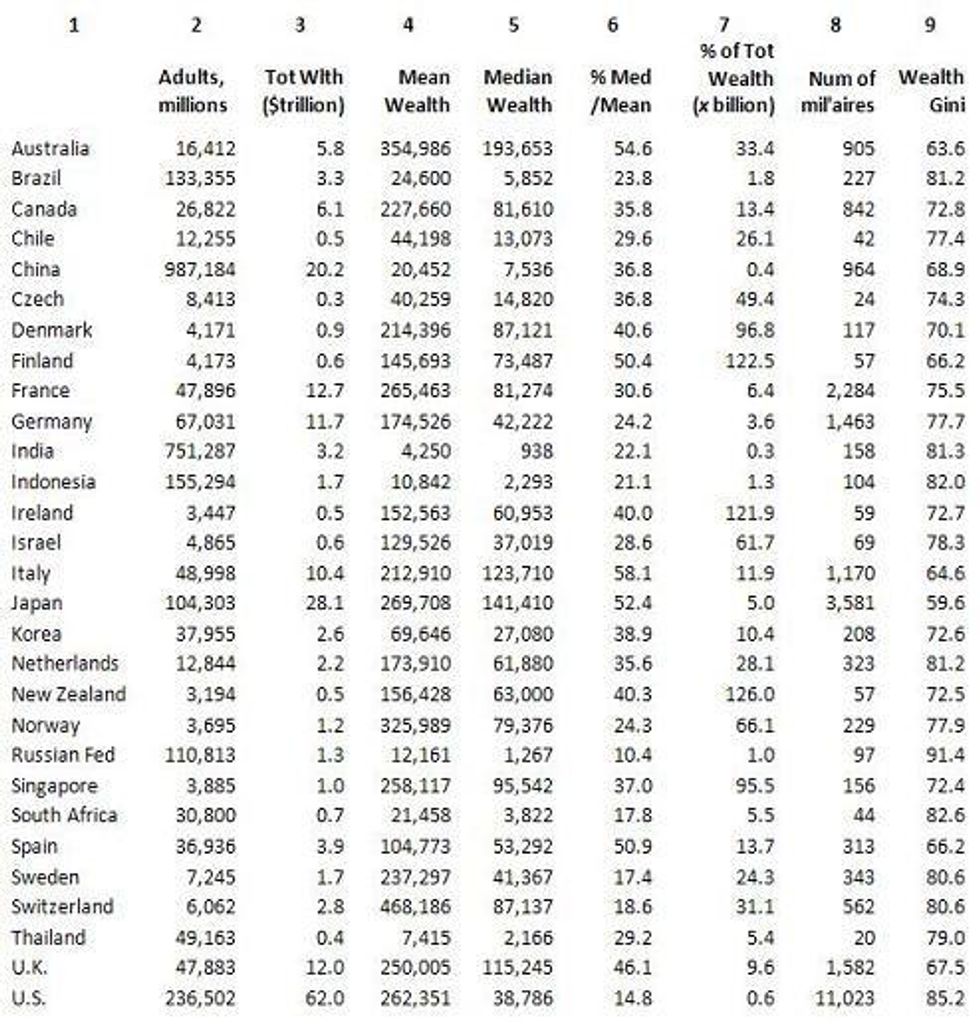A recent article by Les Leopold informed us that our nation is near the bottom of the developed world in median wealth, probably the best gauge for the economic strength of the middle class. The source of the information, the Global Wealth Databook, provides additional evidence of our decline from our once-lofty position as an egalitarian country with opportunities for nearly everyone.
The data is summarized below. Column 4 reveals that the U.S. is near the top of the developed world in average wealth, in good part because of its many millionaires (Col 8). Median wealth per adult, in Column 5, is much lower. As a sign of the distance between America's middle class and its national wealth, Column 6 shows that the ratio of median to mean in the U.S. is lower than in any country except Russia.
The impact of all this is shown in Column 7. Median-level adults in the U.S. get a smaller percentage of their nation's wealth than in any other country except China and India.
To view Column 7 in another way, a middle-class adult in Finland owns $122 for every billion dollars of his or her nation's wealth. In Canada it's $13. In the U.S. it's 60 cents. Only China (40 cents) and India (30 cents) give their middle-class adults less.
America's middle class is sliding out of the developed world and toward third-world status. Column 9 makes it clear. Among all the nations of the world with at least a quarter-million adults, only Russia, Ukraine, and Lebanon are more unequal in their wealth distribution. Most of the third world countries are, sad to say and hard to believe, fairer to their middle classes than we are.
Our work is licensed under Creative Commons (CC BY-NC-ND 3.0). Feel free to republish and share widely.
Paul BuchheitPaul Buchheit is an advocate for social and economic justice, and the author of numerous papers on economic inequality and cognitive science. He was recently named one of 300 Living Peace and Justice Leaders and Models. He is the author of "American Wars: Illusions and Realities" (2008) and "Disposable Americans: Extreme Capitalism and the Case for a Guaranteed Income" (2017). Contact email: paul (at) youdeservefacts.org.
A recent article by Les Leopold informed us that our nation is near the bottom of the developed world in median wealth, probably the best gauge for the economic strength of the middle class. The source of the information, the Global Wealth Databook, provides additional evidence of our decline from our once-lofty position as an egalitarian country with opportunities for nearly everyone.
The data is summarized below. Column 4 reveals that the U.S. is near the top of the developed world in average wealth, in good part because of its many millionaires (Col 8). Median wealth per adult, in Column 5, is much lower. As a sign of the distance between America's middle class and its national wealth, Column 6 shows that the ratio of median to mean in the U.S. is lower than in any country except Russia.
The impact of all this is shown in Column 7. Median-level adults in the U.S. get a smaller percentage of their nation's wealth than in any other country except China and India.
To view Column 7 in another way, a middle-class adult in Finland owns $122 for every billion dollars of his or her nation's wealth. In Canada it's $13. In the U.S. it's 60 cents. Only China (40 cents) and India (30 cents) give their middle-class adults less.
America's middle class is sliding out of the developed world and toward third-world status. Column 9 makes it clear. Among all the nations of the world with at least a quarter-million adults, only Russia, Ukraine, and Lebanon are more unequal in their wealth distribution. Most of the third world countries are, sad to say and hard to believe, fairer to their middle classes than we are.


